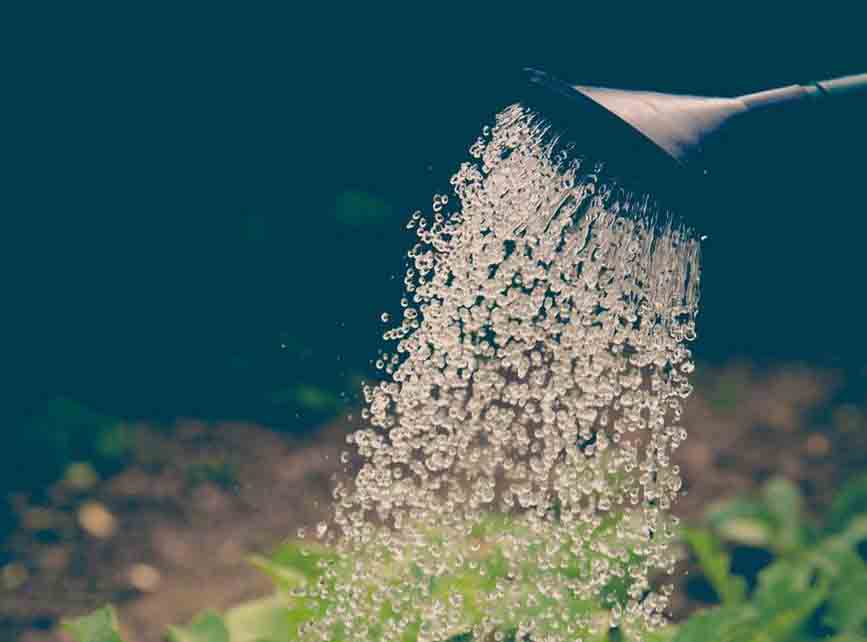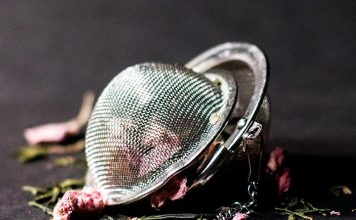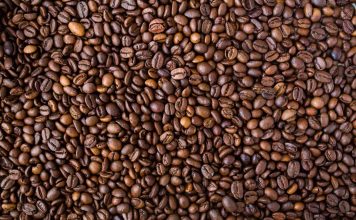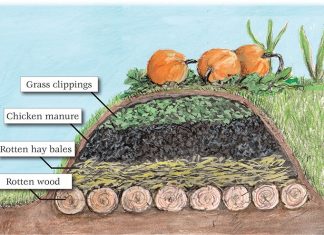 |
|
| Issue #58 • July/August, 1999 |
No one is quite sure about how okra seeds came to this country. Okra is of African origin and the seeds could have come in by the slave trade in the late 1600’s or they might have been brought in by traders from Mediterranean ports. One thing is certain. Someone did a big favor for succeeding generationsfolks like you and me who like good food that’s not hard to prepare. Okra, or “gumbo”, is one of those versatile vegetables that may be enjoyed in many waysboiled, battered and fried, in soups and stews, pickled or used generously in that famous dish known as Louisiana gumbo.
This member of the Mallow Family, known officially as Hibiscus esculentus, can also serve as a tall background plant in a flower garden as its yellow blossoms are beautiful in themselves. Sad to say, like most hibiscus flowers, the blooms only last one day and they aren’t listed under the heading of “cut flowers.”

Okra’s hibiscus type blooms brighten the garden. This is the Jade variety, high-yielding with tender pods and a semi-dwarf plant. Developed by the University of Arkansas.
Okra has other uses. Roasted seeds can be ground and used as a coffee substitute and it is said that the mucilaginous nature of okra can be helpful to some folks suffering from stomach ulcers. If a flower arranger is looking for something unique for a dried arrangement, a few mature dried pods of okra from the garden may be just what is needed to give a special touch.
Behind each okra blossom develops a small green pod that grows to edible size within two or three days depending on variety. These immature pods are what we gardeners harvest for culinary use. Pods should be gathered at their tender best as the longer they remain on the plants, the more fiber build-up they will have. Pods of the older varieties of okra such as Clemson Spineless and Cow Horn can be allowed to grow to 7-9 inches before becoming tough. The newer hybrid pods seem to reach their best texture at not over 5 inches. If some pods do get beyond the tender stage, the seeds may be removed and used in soups, etc., like peas, and the fibrous part dropped in the compost pile.
Although okra is ideally suited for southern gardens, it may also be successfully grown above the Mason-Dixon line and points west if a few simple precautions are taken.
Okra is a heat lover and thrives under summer conditions. Seeds should never be planted until the ground warms up and chilly weather is no longer a threat. However seeds may be started indoors in peat pots and transferred to the garden when the time is right. This makes it possible to have okra in gardens where summer is considerably shorter than in the South. I have observed okra growing and producing well as far north as Worthington, Ohio (next door to Columbus).

Fresh vegetables from the garden enhance the flavor of a pot of gumbo.
Okra likes a sunny spot in well drained, moderately rich soil. Location should be prepared several weeks ahead of planting time by digging in compost, well rotted barnyard manure, chicken litter, or any organic substance that will enrich the spot. Okra requires soil with pH 6.0-8.0 which is consistent with the needs of most vegetable plants. Be careful of an excess of nitrogen in the soil as that will cause more leaf production and less pods. If you’re not sure about your soil pH, it might be well to inquire about taking soil samples to your county extension agent for analysis.
In Zone 8 we have a long growing season. Our last average frost date in spring is about March 15 and the first fall date is around October 15. Therefore it is more practical for us to wait until the ground has warmed up and then plant okra seeds directly into the soil rather than transplant. Seeds are planted about ½-inch deep and sown thinly. When seedlings appear and are a few inches high, we thin the plants to stand about 12-14 inches apart. In our raised bed garden we like to grow dwarf varieties of okra as they require less space than the standard types.
In southwest Arkansas we can almost always count on a summer drought, so many of us resort to a heavy mulch of organic matter (straw, pine needles, grass clippings, etc.) to help conserve moisture. A light mulch is put down when plants are 4-5 inches high and more mulch added as they grow. The mulch also cancels the need to cultivate as it keeps the soil loose and pliable and encourages earthworms. When the going gets rough, okra plants need a good ground soaking about twice a week. We accomplish this by using a small sprinkler set at low pressure so that water isn’t wasted by being slung outside the beds. As said, okra is a heat lover and plants will start a downward trend when days begin to shorten and nights cool off toward the end of summer.
SEED SOURCES
COW HORN
Southern Exposure Seed Exchange
P.O. Box 170
Earlysville, VA 22936
ANNIE OAKLEY
Pinetree Garden Seeds
Box 300
Gloucester, ME 04260
Gurney’s Seed & Nursery Co.
110 Capital St.
Yankton, SD 57079
Henry Field’s Seed & Nursery Co.
415 N. Burnett
Shenandoah, IA 51602
HYBRID CAJUN DELIGHT
Park Seed
1 Parkton Ave.
Greenwood, SC 29647-0001
LEE
Henry Field’s Seed & Nursery
JADE
Southern Exposure Seed Exchange
BURGUNDY
Gurney’s Seed & Nursery Co.
Southern Exposure Seed Exchange
Park Seed
GREEN BEST
Pinetree Garden Seeds
Park Seed
There are several ways to preserve okra for future use. One of the easiest is to freeze cut pods in water. This seems to retain the color better. Simply discard stern ends and slice clean pods crosswise in one fourth inch rounds, put them in freezer bags and fill with water allowing some room for expansion. Lay the packets flat on cookie sheets or heavy cardboard in the freezer. Remove from cookie sheets and stack when frozen. Whenever okra is needed for cooking, drop a packet in some warm water to thaw or remove the okra from the packet and place directly in the soup, etc.
Blanching okra is almost a no-no, as okra being of a mucilaginous nature does not take kindly to blanching. Some folks condemn okra without giving it a chance. “Too slimy,” they say. These folks are not in the know. Simply put in a tablespoon of vinegar when cooking the okra and the “slime” disappears. One of the simplest and tastiest ways to prepare okra fresh from the garden is to boil whole pods until tender in enough water to cover. Drain and serve hot with a sprinkling of black pepper and small pats of butter or oleo.
For those who want to eat healthy, okra contains a goodly amount of Vitamin A and potassium and is low in calories. Like anything else, calories can go up with whatever is added to the okra.
There are a nurrber of okra varieties available from seed companies. It is safe to save seed from the standard types, but seed from hybrid plants will almost always vary from the original plants.
Annie Oakley, a hybrid, produces large spineless pods and has been a favorite of many gardeners for a number of years. Not only does it do well in the South, but it is also recommended for the North.
Hybrid Cajun Delight is a relative newcomer and a heavy producer. It has done well in our garden and is said to succeed in the North. Hybrid varieties usually start blooming a week or so ahead of the older types of okra, but weather conditions can play a big part in determining when plants begin to yield.
Lee okra is a spineless dwarf okra and one that we like to plant in our raised beds as it is a space-saver. We have always had a good yield from Lee and its flavor is superb.
Jade is a semi-dwarf plant with a high yield and was developed by the University of Arkansas. We have had good luck with Jade and have found that it continues to bear its tender pods until late in the season.
Filé
If you’d like to make your own filé it is easy to do if you have access to sassafras trees. These trees are widely distributed over the eastern half of the United States as far west as East Texas and north to southern Ontario.
Simply take a quantity of the fresh green leaves and dry them as you would any green leaf herb. When the leaves have reached a crisp stage, put them in a blender and reduce them to a powder. They are now known as filé. Store in an airtight container. Filé will keep indefinitely.
For folks who like color in the garden, Burgundy is a variety that produces deep red pods besides having the burgundy color distributed throughout the stems and leaves. This okra requires a bit more room than some of the others but gives a good yield. Too bad the pods don’t retain their color when cooked, but they turn green like the other okras.
This year we’re trying a new okra called Green Best Hybrid. It is advertised as having small leaves and being suitable for close planting. We’ll see if Green Best can outdo Lee and Jade.
For the most part, we seldom encounter any trouble with raising okra although okra is subject to verticillium and fusarium wilts. We rotate our crops each year and that seems to be the best preventive. Stinkbugs will occasionally suck juice from a pod causing it to malform. Rather than use a pesticide, we just destroy stinkbugs when we find them.
In praising okra as being downright desirable and delicious, I feel I must be honest and also list the downside to okra. (I can hear a skeptic say, “Lookout here it comes. It causes your hair to fall out or something.”)
Let me hasten to say the drawback is in the harvesting. Beware of varieties not listed as spineless. Even so, notice that this term refers to the pods and not the whole plant. I have yet to deal with an okra plant that did not have tiny almost invisible spines on stalks and leaves. Coming in contact with the spines can lead to a burning, itching and unpleasant sensation wherever one’s skin touches the plant. To be on the safe side when gathering okra, it is best to wear long sleeves and gloves or be extremely careful to avoid brushing against foliage or stems. Fortunately the unpleasantness can be relieved by washing vigorously with soap and warm water.
Having Louisiana as a neighboring state has its advantages as its wonderful cuisine, particularly from southern Louisiana, has inspired many of us to prepare vegetables in ways that we might not have thought of doing on our own. My mother, now deceased, was born in Catahoula Parish and my husband, James, was born in the town of Amelia in Assumption Parish. We have a number of relatives in Louisiana so we can count ourselves among the fortunate. James’s Aunt Katie Graves, who is now gone, used to make gumbo as only a person from lower Louisiana can make it. (See recipe.) Of course, one of the main ingredients was okra.
If you’re not acquainted with the wonderful culinary offspring of the Cajun Country known as gumbo, don’t remain a stranger to it. A big steaming pot of gumbo waiting to be served over bowls of hot rice is enough to make you kick the slats right out of your cradle!
| LOUISIANA GUMBO | |
| 1 large dressed frying chicken, including giblets & neck 1½ cups of flour for dredging ½ tsp. black pepper 1½ lb. okra cut crosswise, ¼” rounds 2 large tomatoes, chopped 2 medium bell peppers, chopped 1 large onion 1 large garlic clove, minced |
3 Tbsp. flour, unbleached 3 qts. hot (not boiling) water 3 large bay leaves 1 lb. fresh shrimp, peeled and deveined 1 pint raw oysters and juice 1 Tbsp. filé hot rice |
| STEP 1: Dredge chicken with flour and pepper. In iron skillet fry until brown in enough good grade cooking oil to keep from sticking. Remove from skillet and set aside in large pot equipped with lid. Reserve chicken oil to be used as needed in rest of cooking.
STEP 2: Combine okra, tomatoes, bell pepper, onion and garlic and fry in just enough chicken oil to prevent sticking. When almost done, put in pot with chicken. STEP 3: Make what is known as a roux (a base for gravy) by combining 5 Tbsp. of reserved chicken oil with 3 Tbsp. flour in a large iron skillet. Stir constantly over medium heat until roux turns dark brown. Be careful not to burn it! (Dark brown is one thing, but burned is another.) Gradually stir water into roux a little at a time. Add pepper and bay leaves and simmer about 5 minutes stirring when necessary to prevent sticking. Pour over chicken and vegetable mixture, bring to a boil and simmer about 30 minutes. STEP 4: Add shrimp and oysters to simmering mixture in pot and continue to cook about 15 minutes. Add filé after gumbo has been removed from fire and has ceased to bubble. Do not boil after filé has been added as gumbo will have a tendency to be stringy. Many cooks put a bottle of filé on the table and let guests add their own. In case you are not familiar with filé, it is made from dried sassafras leaves and is usually available in fish markets or wherever gourmet supplies are sold. A small bottle will last a long time. STEP 5: Serve gumbo over hot rice in large flat type soup bowls. Prepare your rice while the gumbo is cooking and use either long-cooking unpolished rice or brown rice for good flavor. Be sure to have enough rice ready as folks are almost sure to ask for seconds. This recipe will serve 6-8 persons depending on salad, drinks, etc., served with it. |
|














